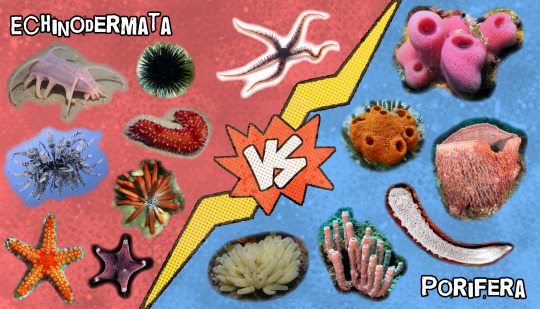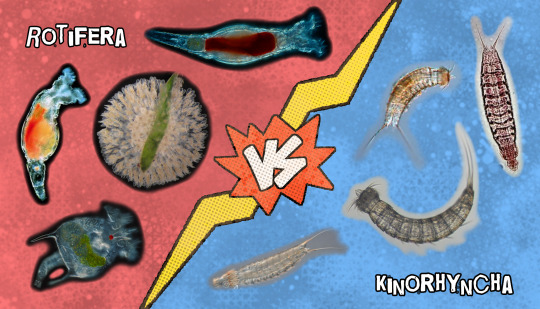Text
DRAGON WHERE
If you reblog this, in the next 30 seconds you will become a dragon.
250K notes
·
View notes
Text
if you are ever wondering why I am like this.. Dragon Autism. okay?
417 notes
·
View notes
Text
In mine and many other east Asian cultures, the dragon traditionally symbolises things like power, wealth and strength (imperial symbol and all)
I think we often forget that in the story of the Great Race, the dragon came in fifth because it'd stopped to give people rain. Then it'd stopped again to push a rabbit adrift on a log across the wide river so it reached the shore safely (that's why the Rabbit year comes before the Dragon).
Dragons aren't meant to just be powerful - they are meant to do good with such power, and to help those in need.
So in this lunar new year, I hope you gain more power, so that you might be able to help others. I pray you have abundant resources so you may give to yourself and those around you. I wish you courage, endurance, kindness and generosity, for yourself and your people.
I hope you, and I, will be rain givers, life preservers, joy bringers.
I hope we will be dragons.
95K notes
·
View notes
Text
Phylum Round 1

Echinodermata: Sea urchins, sea stars, sea cucumbers, brittle stars, and feather stars. This widespread phylum can be found near every continent, including Antarctica, where they are particularly dominant. They are distinctive for their radially symmetrical body and skeleton located between the outer skin and inner body cavity. They move by hydraulic power using a "water vascular system" which pumps water throughout their body. Hundreds of tube feet extend and retract using this system, allowing them to crawl on the seafloor. These organisms play important roles in the food chain of their habitats, like sea urchins grazing in kelp forests.
Porifera: Sponges. One of the oldest forms of animal life on Earth, Porifera represents an evolutionary transition to multicellular life. Their bodies are made up many individual cells, rather than having true tissues, but these cells work together as one organism. By beating specialized flagella (whip-like structures), Sponges create a water current through their many pores, so they may filter feed while living on the seafloor. Various species have developed unique adaptations, such as an internal skeleton of spikes, symbiosis with photosynthesizers, or potent toxins to ward off predators. Many Sponges produce unusual chemical compounds that may be useful to medical research.
438 notes
·
View notes
Text
Phylum Round 1

Xenacoelomorpha: Small, flat, worm-like animals that live in marine and brackish sediments, and sometimes around hydrothermal vents. They can be free-living, symbiotic, or parasitic. A unique feature is that their stomachs lack nerve cells, unlike many other animals. Their evolutionary relationship to the rest of Animalia has been highly debated, and very little is known about their lifestyles.
Hemichordata: Acorn Worms. These marine burrowing worms are both deposit feeders (eating sediment) and occasionally filter-feeders or detritivores. The acorn-like proboscis on their head helps them with burrowing and may help funnel sediment to the mouth, which is between the "acorn" and the "collar". Due to their unexpected relation to Echinodermata, these animals are used as a comparison to study the evolution of early Chordate zygote growth.
94 notes
·
View notes
Text
Phylum Round 1

Mollusca: Snails, slugs, cephalopods, bivalves, chitons, limpets, and others. This group contains the largest invertebrates, the giant and colossal squids. They are the largest marine phylum, but many members are terrestrial. Although they are incredibly diverse in body shape, all Molluscs generally have a hard "radula" used for eating, a mantle that may secrete a hard shell, and a body mostly composed of dense muscle. These animals can be predators, herbivores, filter feeders, symbiotic, and even parasitic. This phylum exhibits remarkable diversity overall.
Bryozoa: Moss Animals. Small, frequently colonial, and often colorful, Bryozoans are found in both freshwater and marine habitats. Their crown of tentacles are used for filter feeding, similar to Entoprocta. Colonies consist of zooids living within small cup-like supports that fuse together, forming encrusting or branching structures. Individuals may take on different shapes for different roles within the colony, such as the "avicularia", which are bird-beak-shaped zooids used for defense.
143 notes
·
View notes
Text
Phylum Round 1

Rotifera: Wheel Animals. Mostly freshwater with some saltwater species, and can live in the water column, within the sediment, or attached to hard surfaces. Some Rotifers even live within the thin layer of moisture covering mosses. Their most distinctive feature is their corona and tentacles, which, when feeding, look like a rotating wheel. Their bodies are entirely soft except for the small jaw-like structures in their throats that help them chew their food. As detritivores, they are important contributors to the nitrogen cycle and breaking down dead organic matter.
Kinorhyncha: Mud Dragons. Kinorhynchs are meiofauna, meaning they live in the spaces between grains of sand. They are segmented and have sets of spines along the body. These spines are used to move through the sediment, gripping individual sand grains as the body moves forward. A crown of spines around the head frames the mouth, which is full of sharp toothlike spines. Although little is known about their life cycle, research has shown that mother Kinorhynchs wrap each egg in a protective layer of mud and dead organic matter until the young hatch.
125 notes
·
View notes
Text
Algaes and gentleferns, the fight is on!
Since @battle-of-the-taxons picked the wrong kingdom, we're going after the true most favorite (phylum/class...species) within the best kingdom ever, Plantae!
The phylum showdown will start Monday, so anyone who has any strong opinions on eg whether red algae are real plants, the time to make your opinions known is now. Also feel free to get a head start on propaganda for your faves, via the ask box! (Or just share fun facts and/or terrible puns, that's cool too.)
Hosted by Ray @rotationalsymmetry -- I have never done this before (also, I'm not an expert, just an enthusiastic amateur) so please be kind.
See @animalshowdown for the animal version.
39 notes
·
View notes
Text
reblog if you are ASEXUAL, support ASEXUAL PEOPLE, or SECRETLY A DRAGON IN HUMAN FORM
138K notes
·
View notes
Text
Some internet language things I really like:
Phrases like “that’s certainly a thing”, “it’s so shaped”, or “one of the most animals” (is there a name for this?)
when people write with little to no punctuation like they are just so done
More specifically, asking questions without punctuation i.e. ‘what’ or ‘why’. It’s like, you want to know but also you are resigned to the answer?
When people capitalise The Thing for emphasis - particularly if they add a trademark symbol to really drive The Point™ home
How we use both bold and italic text for emphasis, but they convey it in different ways and I can’t quite explain how
Responding to things exclusively with punctuation, because sometimes words fail you and all you can say is !!!
67K notes
·
View notes
Text
my strategy is to tell them 33 is when hobbits become adults
i swear to god someone just said 33 years old is middle aged and i want to throw not dangerous but extremely unpleasant things at them like moldy wet bread
10 notes
·
View notes
Text
there’s been a really bizarre trend in the past couple years of TERFS/radfems getting pissed off about biology posts. posts about the bilateral gyandromorph cardinal (one half male, one half female), posts about older hens beginning to crow and act like roosters, posts about animals being animals. and it’s hilarious because they interpret these posts as some kind of agenda. no! these are animals not choosing any gender identity or sexuality but being born into bodies they have no control over. weird how that happens in nature huh
91K notes
·
View notes
Text
would you still love me if i was a wyrm
32K notes
·
View notes
Photo

a guildmate struck me with inspiration. critiques welcome
129 notes
·
View notes
Text
I feel like the reason certain dog-lovers insist cats are evil is because they read their body language as if they were dogs. So here’s a very basic guide to common “mean” things cats do that actually aren’t mean at all if you know what they’re thinking.
Rolling and exposing belly- attacks you when touched
Does not mean: Give belly rubs! - haha I tricked you!
Actually means: I’m playful! If you reach for my belly I’ll grab your arm and bite it because I think we’re playfighting!
Lazily exposing belly - still attacks when touched
Does not mean: tricked you again!
Actually means: I’m showing you my belly because I trust you. Please don’t break that trust by invading my personal space. I might accept a belly rub if I’m not ticklish and I know you well.
Snapping at you while being pet
Does not mean: I suddenly decided I dislike you!
Actually means: You’re petting me in a way that gives me too much restless energy. Please focus on petting my head and shoulders instead of stroking the full length of my back next time.
Is in the same room but makes no attempt to interact
Does not mean: I’m ignoring you
Actually means: We’re hanging out! I’m being respectful by giving you space while still enjoying your company.
Slapping/scratching your hand when you try to pet them
Does not mean: I hate you!
Actually means: You’ve failed to establish that we’re not playing, or the way you’re approaching me scares me. Be calmer, speak more gently, make eye-contact and blink slowly at me before you try again.
434K notes
·
View notes
